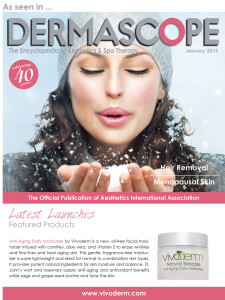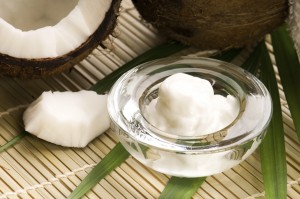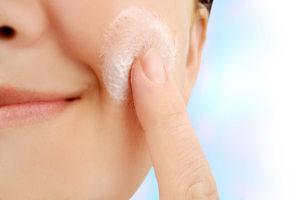 Cellulite is a modern condition that has created more confusion than answers. Researching basic information about the topic can result in a myriad of conflicting data. Medical professionals believe cellulite is a non-issue, albeit unsightly. Due to the unsightly nature of the condition, spa treatments, creams, and claims on its causes and cures abound.
Cellulite is a modern condition that has created more confusion than answers. Researching basic information about the topic can result in a myriad of conflicting data. Medical professionals believe cellulite is a non-issue, albeit unsightly. Due to the unsightly nature of the condition, spa treatments, creams, and claims on its causes and cures abound.
Cellulite, which is not to be confused with cellulitis or celluloid, has been classified medically with a variety of nomenclature, including adiposis edematosa, dermopanniculosis deformans, status protrusus cutis, and gynoid lipodystrophy. The suffix ‘ite’ usually refers to inflammation in medicinal vernacular, so the term “cellulite” is technically incorrect; it is, however, widely used and accepted by physicians and the general population.
In basic terms, cellulite is the extrusion of fat pockets through layers of fascia or connective tissue just under the dermis that can be seen through the top most epidermal layer, creating skin puckering and dimpling. This effect often occurs on the hips, buttocks, and abdomen.
Cellulite occurs in most post-pubescent females and among 85 to 98 percent of women, indicating that it is physiological rather than pathological. It can result from a complex combination of factors ranging from hormones to heredity.
AESTHETIC DERMATOLOGY
 Historically, the concept and naming of cellulite has only been around for the last century, when a number of early European clinicians all tried their hand at describing and identifying the anatomy and histology of fat. In the 1920s, French physicians Alquier and Paviot described “cell-u-leet” as a “non-inflammatory cellular disorder of mesodermal origin.” In 1973, cellulite became a household term, thanks mostly to Nicole Ronsard’s best-selling book, “Cellulite: Those Lumps, Bumps, and Bulges You Couldn’t Lose Before.” Following this book, the idea of cellulite officially entered culture as a new dermatological condition.
Historically, the concept and naming of cellulite has only been around for the last century, when a number of early European clinicians all tried their hand at describing and identifying the anatomy and histology of fat. In the 1920s, French physicians Alquier and Paviot described “cell-u-leet” as a “non-inflammatory cellular disorder of mesodermal origin.” In 1973, cellulite became a household term, thanks mostly to Nicole Ronsard’s best-selling book, “Cellulite: Those Lumps, Bumps, and Bulges You Couldn’t Lose Before.” Following this book, the idea of cellulite officially entered culture as a new dermatological condition.
Perhaps it was this new dermatological focus that brought the lumpy, bumpy skin into light. But, more likely, it is a result of the fact that the modern, western woman has been baring more skin in the past century than ever before. In fact, for the first time in a millennium, the ideal female form has moved from a voluptuous, rubenesque body type to one of slender musculature highlighting every flaw. Today, the perception of cellulite has taken on a life and treatment niche all its own.
CHARACTERISTICS
 Cellulite results from many complex events involving the epidermis, dermis, and subcutaneous tissues. Most women will develop cellulite at some point in their lives. It does not matter if someone is skinny or full-figured, the skin tissue biology will remain the same. Sub-dermal fat looks lumpy because it pushes against the connective tissue, causing the skin above it to pucker.
Cellulite results from many complex events involving the epidermis, dermis, and subcutaneous tissues. Most women will develop cellulite at some point in their lives. It does not matter if someone is skinny or full-figured, the skin tissue biology will remain the same. Sub-dermal fat looks lumpy because it pushes against the connective tissue, causing the skin above it to pucker.
More women than men suffer from cellulite. In fact, most men show little to no sign of cellulite dimpling. Cellulite usually appears after puberty and is more prevalent in obese women. It is, however, not harmful to the body. The reason more women than men are affected by cellulite can be found in the biology of the skin and hormones. The sub-dermal collagen tissues in women are formed in rows, which allows fat to be compartmentalized and stretched back and forth, making dimpled skin and cellulite visible. The reasons for this pattern are likely due to women’s anatomical ability to stretch tissues and skin to accommodate a growing baby and widening hips. Men’s sub-dermal biology is formed in an X pattern of cells, criss-crossing the tissues to form a grid that prohibits deep pockets or dimpling of the surface skin layer.
STAGES
Cellulite will typically appear in two to four stages that increase in severity over time: soft cellulite will appear in patches that do not yet show deep pockets. It is believed that the deep pockets occur when blood and lymph vessels deteriorate and fluid and toxins accumulate. As the fibrous bands wrap around fat cells, the dimpled orange peel or cottage cheese effect will appear.
Without treatment or strengthening and detoxifying exercise, collagen and elastin bands begin to break down while fibrous bands wrap around clusters of fat cells instead of individual cells. This reaction creates a harder, more painful form of cellulite that can easily bruise and produce cold patches of skin where the circulation has been reduced or cut off.
CAUSES
There is increased evidence to suggest that estrogen is the most common element involved in the aggravation and persistence of cellulite. Estrogen, insulin, noradrenaline, thyroid hormones, and prolactin are part of the cellulite production process. The incidence of menstruation, pregnancy, birth control usage, and hormone replacement all seem to support this evidence.
One theory is that decreasing estrogen levels or imbalanced hormones can restrict blood flow to the connective tissue that supports the sub-dermal fat layers. Less oxygen to the tissues creates lower collagen production. Fat cells have also been shown to enlarge as estrogen levels fall.
Decreased oxygen and thinning epidermal skin (flaccidity) can result from many different factors, including age, smoking, genetics, and weight loss. Genetic factors can be linked to a person’s speed of metabolism, distribution of fat under the skin, ethnicity, and circulatory levels. Once the skin loses volume, it becomes less elastic, thinner, and more likely to sag. Underlying fat deposits will become more visible as they protrude through weakening connective tissue, resulting in a dimpling effect.
Smokers may also suffer from increased forms of cellulite. Lack of oxygen to the epidermal cells can cause a breakdown of tissue, deflating, and compression of healthy, plump cells to follow the curvature of the subcutaneous fat cells underneath.
 Another possible contributor to thinning skin and cellulite occurs from wearing underwear with elastic bands that are too tight across the buttocks, which can compress skin tissue and limit blood flow, increasing the appearance of cellulite.
Another possible contributor to thinning skin and cellulite occurs from wearing underwear with elastic bands that are too tight across the buttocks, which can compress skin tissue and limit blood flow, increasing the appearance of cellulite.
Other sources believe a sedentary lifestyle and unhealthy eating patterns will increase one’s chances of gaining weight, escalating fat, forming cellulite earlier, or exacerbating the cellulite already present. Some studies have claimed that a toxic body alone contributes to cellulite production, but traditional medical evidence rejects this notion.
The causes that can potentially increase the appearance of cellulite include poor diet, smoking or a lack of oxygen, fad dieting, slow metabolism, lack of physical activity or sitting for long periods of time, hormone changes, dehydration, total body fat, and the thickness and color of the skin.
HOME AND SPA TREATMENTS
 Cellulite is the bane of many women’s body care regimen. It seems, no matter what treatments are used, cellulite refuses to budge permanently. Some swear by the less invasive benefits from regular massages, lymphatic drainage treatments, creams, and wraps, but those treatments alone may not be enough, depending on the level of cellulite.
Cellulite is the bane of many women’s body care regimen. It seems, no matter what treatments are used, cellulite refuses to budge permanently. Some swear by the less invasive benefits from regular massages, lymphatic drainage treatments, creams, and wraps, but those treatments alone may not be enough, depending on the level of cellulite.
To date, no quick fix has been found; the most effective treatment evidence so far seems to be in the basics: exercising, eating well, and taking care of the skin and body. Furthermore, regular exercise can stimulate the body’s natural cleansing process. Through sweat and blood flow, healthier tissues can be created that hold up fat stores more easily instead of collapsing into themselves.
Topical Products
 There is no limit of creams or serums claiming to magically melt away fat. Most are good for temporarily plumping skin with additional moisture, but that is all. The ingredients promoted for skin tightening and fat breakdown are caffeine, aminophylline, and theophylline. Others include vitamins, minerals, and herbal extracts that might not reduce cellulite, but can improve skin tone and texture. Generally, these products require daily or twice daily applications to show any promise, but they may add some value when combined with other treatments.
There is no limit of creams or serums claiming to magically melt away fat. Most are good for temporarily plumping skin with additional moisture, but that is all. The ingredients promoted for skin tightening and fat breakdown are caffeine, aminophylline, and theophylline. Others include vitamins, minerals, and herbal extracts that might not reduce cellulite, but can improve skin tone and texture. Generally, these products require daily or twice daily applications to show any promise, but they may add some value when combined with other treatments.
Any cream containing retinol has been shown to help with wrinkling, dimpling, and some skin indentations, but evidence supports it can never completely remove fat. Twice-daily application of a 0.3 percent retinol cream for six months can potentially thicken the skin and reduce the appearance of cellulite.
The appearance of cellulite is visibly lessened on darker skin. For those with lighter skin, self-tanner may make the bumps and dimples harder to spot. After a light body scrub, first apply self-tanner to the affected areas, then cover the rest of the body. Avoid tanning beds and natural sun exposure as ultraviolet rays will damage the skin and make cellulite more prominent.
Massage
 Regular massages will boost circulation and improve blood flow. While applying body creams, take a few extra minutes to give these areas a firm massage. Massage improves blood flow and reduces excess fluid, which can also temporarily reduce the dimpled effect. Body scrubs, dry brushing, and showers that switch from hot to cold can also boost circulation.
Regular massages will boost circulation and improve blood flow. While applying body creams, take a few extra minutes to give these areas a firm massage. Massage improves blood flow and reduces excess fluid, which can also temporarily reduce the dimpled effect. Body scrubs, dry brushing, and showers that switch from hot to cold can also boost circulation.
Mechanical Massage
Endermologie (or lipomassage or endermology) is a specific type of mechanical massage. A machine with low-pressure suction kneads the skin between two spinning rollers. The theory is that the deep massage will break up the connective tissue that causes dimples and increase blood flow. Most studies show that massage techniques, including endermologie, will improve the skin’s appearance for a short time, but offer no long-term benefit. Some experts worry that the suction can cause the skin to slacken prematurely, making it look worse. The treatment is FDA-approved, but it is also pricey and may take several sessions to get results. The benefits are likely to go away without regular sessions.
Body Wraps
 A body wrap can tighten and smooth the skin and improve its tone and texture for a short period. The effects generally last about a day and costs vary. Beware of slimming wraps that promise to remove inches in hours. They may severely dehydrate skin cells and help with inch-loss within hours, but they will not affect the stores of fat or the permanent cellular skin structures that supports them.
A body wrap can tighten and smooth the skin and improve its tone and texture for a short period. The effects generally last about a day and costs vary. Beware of slimming wraps that promise to remove inches in hours. They may severely dehydrate skin cells and help with inch-loss within hours, but they will not affect the stores of fat or the permanent cellular skin structures that supports them.
Ionithermie cellulite-reduction treatment focuses on reducing cellulite with ions and various topicals. The treatment claims to reduce the unpleasant appearance of cellulite while detoxifying and slimming the body. This process involves covering the affected area with micronized algae and conductive thermal aroma clay, then wrapping it in plastic before applying an electric current with attached electrodes. The treatment sessions, which take place mostly in beauty salons and spas, last for 30 minutes, but may vary depending on the size of the treatment area. According to many reviews, the treatment is not uncomfortable or painful. The results, however, are mixed and diet and exercise are recommended for best possible results.
Exercise and Diet
Get moving! It is one of the best ways to build strong muscles under those lumpy areas and make skin look more even. It does not matter what form of exercise is chosen, as cardio, walking, yoga, and weight training will improve overall body and muscle tone. Focus on the buttock and quad areas with step-ups, lunges, and squats at least twice a week for an extra cellulite-reducing boost.
 Try to eat a diet rich in natural foods filled with all the colors of the rainbow instead of empty fast food calories that are high in fat. Shedding extra pounds can go a long way in reducing the dimpled effect and toning the body.
Try to eat a diet rich in natural foods filled with all the colors of the rainbow instead of empty fast food calories that are high in fat. Shedding extra pounds can go a long way in reducing the dimpled effect and toning the body.
Compression Wear
There are plenty of modern options for body shapers and compression workout gear. These new materials claim to hold muscles in place and improve blood flow, which may or may not help with cellulite.
MEDICAL SPA AND MEDICAL TREATMENTS
 Many medical spa treatments and high-end therapies are available for cellulite, but they can be costly. Furthermore, some may work better than others, depending on skin and body type. It is important to be aware of the dangers associated with medical spa treatments. Check for references and medical accreditations or licensing before allowing anyone to perform invasive procedures. Several therapies have been suggested for removing cellulite, but none have yet been confirmed by scientific research.
Many medical spa treatments and high-end therapies are available for cellulite, but they can be costly. Furthermore, some may work better than others, depending on skin and body type. It is important to be aware of the dangers associated with medical spa treatments. Check for references and medical accreditations or licensing before allowing anyone to perform invasive procedures. Several therapies have been suggested for removing cellulite, but none have yet been confirmed by scientific research.
A 2015 National Center for Biotechnology Information (NCBI) evidence-based review of 67 studies into the effectiveness of different techniques stated, “Most of the evaluated studies, including laser- and light-based modalities, radiofrequency, and others had important methodological flaws…Some evidence for potential benefit was only seen for acoustic wave therapy (AWT) and the 1440 nm Nd:YAG minimally invasive laser.”
Laser Treatments
 Sometimes referred to as radiofrequency systems, these treatments show promise for reducing cellulite with a combination of therapies, including massage, liposuction, or light therapy. Direct laser treatments work by inserting a small probe under the skin, which is then fired, breaking up the fatty tissue. The laser’s light or heat can liquefy fat, cut connective tissue to loosen puckering, boost collagen growth, and increase skin tightening. Increased blood flow and reduced fluid retention are also claimed. Recipients of the treatment can expect a 75 percent improvement in the reduction of cellulite. Swelling and minor pain are typical side effects and results can last from six months to one year. The most popular lasers are FDA-approved, like Cellulaze, but can be expensive and may require several visits. Long-term effects are unknown with most modern lasers.
Sometimes referred to as radiofrequency systems, these treatments show promise for reducing cellulite with a combination of therapies, including massage, liposuction, or light therapy. Direct laser treatments work by inserting a small probe under the skin, which is then fired, breaking up the fatty tissue. The laser’s light or heat can liquefy fat, cut connective tissue to loosen puckering, boost collagen growth, and increase skin tightening. Increased blood flow and reduced fluid retention are also claimed. Recipients of the treatment can expect a 75 percent improvement in the reduction of cellulite. Swelling and minor pain are typical side effects and results can last from six months to one year. The most popular lasers are FDA-approved, like Cellulaze, but can be expensive and may require several visits. Long-term effects are unknown with most modern lasers.
Acoustic Wave Therapy
Also known as lipotripsy, acoustic wave therapy uses a handheld device to create sound or shockwaves to stimulate metabolic processes and improve connective tissue elasticity. This treatment promises fat reduction and body contouring. Results vary and it can take several sessions.
Subcision
 Subcision is a minor surgical procedure used for treating depressed cutaneous scars and wrinkles. It is also called subcutaneous incisional surgery. Unlike lasers, subcision uses a special hypodermic needle or blade to slice through the cellulite bands underneath the skin. Stabilized-guided subcision systems use vacuum-assisted control of both the depth and area of tissue release for precise and reproducible results. As it cuts the connective bands, the tissue underneath moves up to fill the space under the skin, removing the appearance of cellulite. About 20 to 30 individual cellulite dimples are treated during an average one-hour session. Results may last for two to three years, but data on its success is limited. These treatments are not recommended for loose skin patients or those with orange peel stage 1 cellulite.
Subcision is a minor surgical procedure used for treating depressed cutaneous scars and wrinkles. It is also called subcutaneous incisional surgery. Unlike lasers, subcision uses a special hypodermic needle or blade to slice through the cellulite bands underneath the skin. Stabilized-guided subcision systems use vacuum-assisted control of both the depth and area of tissue release for precise and reproducible results. As it cuts the connective bands, the tissue underneath moves up to fill the space under the skin, removing the appearance of cellulite. About 20 to 30 individual cellulite dimples are treated during an average one-hour session. Results may last for two to three years, but data on its success is limited. These treatments are not recommended for loose skin patients or those with orange peel stage 1 cellulite.
Carboxytherapy
Carboxytherapy, a non-surgical cosmetic treatment, injects gaseous carbon dioxide below the skin through a needle into the subcutaneous tissue. It claims to kill fat cells, stimulate blood flow, improve the skin’s elasticity, and reduce the appearance of cellulite. It has also become a popular treatment for stretch marks. It has not been clinically tested nor is it approved by the FDA. Side effects include bruising and mild discomfort after the procedure.
TREATMENTS TO CONSIDER CAREFULLY
 Often called mesotherapy, this procedure is performed by injecting various chemicals into the fat layer below the skin to encourage breakdown and make cellulite less noticeable. The chemicals used include phosphatidylcholine, aminophylline, hormones, herbal extracts, vitamins, and minerals. There is little proof these treatments help. There have been many cases of botched injections that result in infection, swelling, rashes, and lumpy skin.
Often called mesotherapy, this procedure is performed by injecting various chemicals into the fat layer below the skin to encourage breakdown and make cellulite less noticeable. The chemicals used include phosphatidylcholine, aminophylline, hormones, herbal extracts, vitamins, and minerals. There is little proof these treatments help. There have been many cases of botched injections that result in infection, swelling, rashes, and lumpy skin.
Liposuction
Liposuction, also known as lipoplasty, includes laser-assisted liposuction and ultrasonic liposculpting; it is designed to remove localized pockets of fat sub-dermally through a suction tube. This procedure is ideal for people who are unable to achieve a slimmer body shape despite a healthy diet and exercise routine. This fat removal procedure is often used on the thighs, buttocks, and abdomen. Many cases, however, have proven that it can actually make the remaining dimpled fat look worse.
Cryolipolysis
This treatment is also called body shaping and claims to reduce the appearance of cellulite. This non-surgical alternative to liposuction freezes and destroys fat cells, but leaves the top skin layer intact. Within a few weeks of treatment, the dead fat cells are naturally broken down and flushed out of the body through the liver. The FDA has certified it as a safe medical treatment, but certain side effects, such as pain, swelling, and redness, affect the skin in a similar way to frostbite. In some men, hyperplasia occurred, reversing the fat cells from smaller to larger. Three treatments are recommended and may take three to four months to see results.
ON THE HORIZON
The more one looks into the condition of cellulite, the more conflicting information there seems to be. Research on cellulite and its treatments can easily be found in general medical journals. A variety of tests and diagnostics have been documented for evidence of abnormality or toxicity that would require treatment, but usually finding little-to-none.
What does seem to be prevalent for medical concern is the number of unregulated anti-cellulite treatments being performed today. Doctors and researchers repeatedly stress the importance of caution in the use of these creams and treatments and implore patients to do their homework and ask questions first.
According to the United States National Library of Medicine, “No existing treatments, including weight loss, exercise, massages, wraps, creams, supplements, or surgery, have yet been shown to get rid of cellulite. Liposuction is not recommended for cellulite, and may even make it look worse. New treatments, such as laser, are being developed for cellulite. Many people seek treatment for cellulite because they are bothered by how it looks. The problem is not harmful to your health, however. Most health care providers consider cellulite a normal condition for many women and some men.”
It is likely that dermatologists will become more interested in studying and treating this condition in the coming years and that the skin care industry may develop more effective treatments due to the increasing revenue stream. The consensus is that cellulite can never be completely removed. For now, the most effective results seem to be found through exercise, maintaining overall health and wellness, and the occasional laser or spa treatment.
 Rachelle Dupree has over 20 years of experience in marketing, media, and communications. She earned a bachelor’s degree in communication arts and marketing and a second degree in graphic design. She studied with a Denver-based herbalist and naturopath for four years, combining her marketing knowledge with her love of natural remedies. She currently contracts as a marketing and communications director for Vivoderm Natural Skincare and various design clients.
Rachelle Dupree has over 20 years of experience in marketing, media, and communications. She earned a bachelor’s degree in communication arts and marketing and a second degree in graphic design. She studied with a Denver-based herbalist and naturopath for four years, combining her marketing knowledge with her love of natural remedies. She currently contracts as a marketing and communications director for Vivoderm Natural Skincare and various design clients.

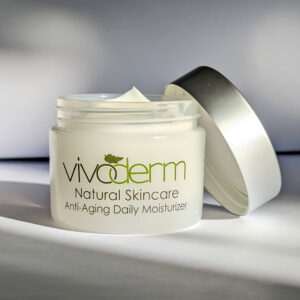


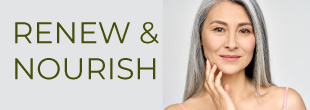
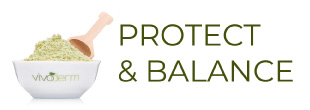
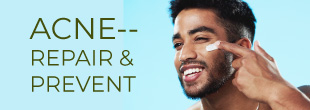

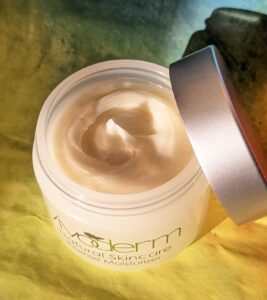
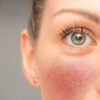
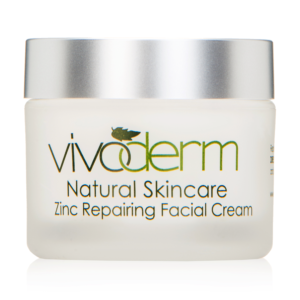
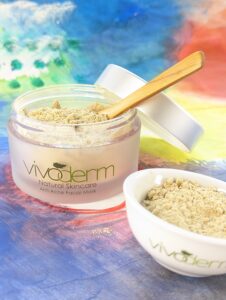
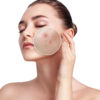
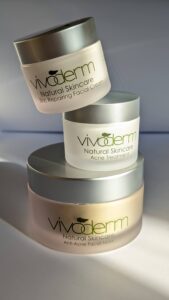
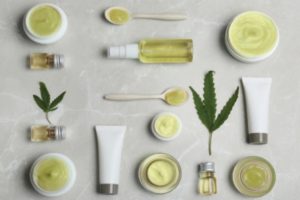
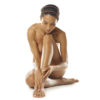
 Cellulite is a modern condition that has created more confusion than answers. Researching basic information about the topic can result in a myriad of conflicting data. Medical professionals believe cellulite is a non-issue, albeit unsightly. Due to the unsightly nature of the condition, spa treatments, creams, and claims on its causes and cures abound.
Cellulite is a modern condition that has created more confusion than answers. Researching basic information about the topic can result in a myriad of conflicting data. Medical professionals believe cellulite is a non-issue, albeit unsightly. Due to the unsightly nature of the condition, spa treatments, creams, and claims on its causes and cures abound. Historically, the concept and naming of cellulite has only been around for the last century, when a number of early European clinicians all tried their hand at describing and identifying the anatomy and histology of fat. In the 1920s, French physicians Alquier and Paviot described “cell-u-leet” as a “non-inflammatory cellular disorder of mesodermal origin.” In 1973, cellulite became a household term, thanks mostly to Nicole Ronsard’s best-selling book, “Cellulite: Those Lumps, Bumps, and Bulges You Couldn’t Lose Before.” Following this book, the idea of cellulite officially entered culture as a new dermatological condition.
Historically, the concept and naming of cellulite has only been around for the last century, when a number of early European clinicians all tried their hand at describing and identifying the anatomy and histology of fat. In the 1920s, French physicians Alquier and Paviot described “cell-u-leet” as a “non-inflammatory cellular disorder of mesodermal origin.” In 1973, cellulite became a household term, thanks mostly to Nicole Ronsard’s best-selling book, “Cellulite: Those Lumps, Bumps, and Bulges You Couldn’t Lose Before.” Following this book, the idea of cellulite officially entered culture as a new dermatological condition. Cellulite results from many complex events involving the epidermis, dermis, and subcutaneous tissues. Most women will develop cellulite at some point in their lives. It does not matter if someone is skinny or full-figured, the skin tissue biology will remain the same. Sub-dermal fat looks lumpy because it pushes against the connective tissue, causing the skin above it to pucker.
Cellulite results from many complex events involving the epidermis, dermis, and subcutaneous tissues. Most women will develop cellulite at some point in their lives. It does not matter if someone is skinny or full-figured, the skin tissue biology will remain the same. Sub-dermal fat looks lumpy because it pushes against the connective tissue, causing the skin above it to pucker. Another possible contributor to thinning skin and cellulite occurs from wearing underwear with elastic bands that are too tight across the buttocks, which can compress skin tissue and limit blood flow, increasing the appearance of cellulite.
Another possible contributor to thinning skin and cellulite occurs from wearing underwear with elastic bands that are too tight across the buttocks, which can compress skin tissue and limit blood flow, increasing the appearance of cellulite. Cellulite is the bane of many women’s body care regimen. It seems, no matter what treatments are used, cellulite refuses to budge permanently. Some swear by the less invasive benefits from regular massages, lymphatic drainage treatments, creams, and wraps, but those treatments alone may not be enough, depending on the level of cellulite.
Cellulite is the bane of many women’s body care regimen. It seems, no matter what treatments are used, cellulite refuses to budge permanently. Some swear by the less invasive benefits from regular massages, lymphatic drainage treatments, creams, and wraps, but those treatments alone may not be enough, depending on the level of cellulite. There is no limit of creams or serums claiming to magically melt away fat. Most are good for temporarily plumping skin with additional moisture, but that is all. The ingredients promoted for skin tightening and fat breakdown are caffeine, aminophylline, and theophylline. Others include vitamins, minerals, and herbal extracts that might not reduce cellulite, but can improve skin tone and texture. Generally, these products require daily or twice daily applications to show any promise, but they may add some value when combined with other treatments.
There is no limit of creams or serums claiming to magically melt away fat. Most are good for temporarily plumping skin with additional moisture, but that is all. The ingredients promoted for skin tightening and fat breakdown are caffeine, aminophylline, and theophylline. Others include vitamins, minerals, and herbal extracts that might not reduce cellulite, but can improve skin tone and texture. Generally, these products require daily or twice daily applications to show any promise, but they may add some value when combined with other treatments. Regular massages will boost circulation and improve blood flow. While applying body creams, take a few extra minutes to give these areas a firm massage. Massage improves blood flow and reduces excess fluid, which can also temporarily reduce the dimpled effect. Body scrubs, dry brushing, and showers that switch from hot to cold can also boost circulation.
Regular massages will boost circulation and improve blood flow. While applying body creams, take a few extra minutes to give these areas a firm massage. Massage improves blood flow and reduces excess fluid, which can also temporarily reduce the dimpled effect. Body scrubs, dry brushing, and showers that switch from hot to cold can also boost circulation. A body wrap can tighten and smooth the skin and improve its tone and texture for a short period. The effects generally last about a day and costs vary. Beware of slimming wraps that promise to remove inches in hours. They may severely dehydrate skin cells and help with inch-loss within hours, but they will not affect the stores of fat or the permanent cellular skin structures that supports them.
A body wrap can tighten and smooth the skin and improve its tone and texture for a short period. The effects generally last about a day and costs vary. Beware of slimming wraps that promise to remove inches in hours. They may severely dehydrate skin cells and help with inch-loss within hours, but they will not affect the stores of fat or the permanent cellular skin structures that supports them. Try to eat a diet rich in natural foods filled with all the colors of the rainbow instead of empty fast food calories that are high in fat. Shedding extra pounds can go a long way in reducing the dimpled effect and toning the body.
Try to eat a diet rich in natural foods filled with all the colors of the rainbow instead of empty fast food calories that are high in fat. Shedding extra pounds can go a long way in reducing the dimpled effect and toning the body. Many medical spa treatments and high-end therapies are available for cellulite, but they can be costly. Furthermore, some may work better than others, depending on skin and body type. It is important to be aware of the dangers associated with medical spa treatments. Check for references and medical accreditations or licensing before allowing anyone to perform invasive procedures. Several therapies have been suggested for removing cellulite, but none have yet been confirmed by scientific research.
Many medical spa treatments and high-end therapies are available for cellulite, but they can be costly. Furthermore, some may work better than others, depending on skin and body type. It is important to be aware of the dangers associated with medical spa treatments. Check for references and medical accreditations or licensing before allowing anyone to perform invasive procedures. Several therapies have been suggested for removing cellulite, but none have yet been confirmed by scientific research. Sometimes referred to as radiofrequency systems, these treatments show promise for reducing cellulite with a combination of therapies, including massage, liposuction, or light therapy. Direct laser treatments work by inserting a small probe under the skin, which is then fired, breaking up the fatty tissue. The laser’s light or heat can liquefy fat, cut connective tissue to loosen puckering, boost collagen growth, and increase skin tightening. Increased blood flow and reduced fluid retention are also claimed. Recipients of the treatment can expect a 75 percent improvement in the reduction of cellulite. Swelling and minor pain are typical side effects and results can last from six months to one year. The most popular lasers are FDA-approved, like Cellulaze, but can be expensive and may require several visits. Long-term effects are unknown with most modern lasers.
Sometimes referred to as radiofrequency systems, these treatments show promise for reducing cellulite with a combination of therapies, including massage, liposuction, or light therapy. Direct laser treatments work by inserting a small probe under the skin, which is then fired, breaking up the fatty tissue. The laser’s light or heat can liquefy fat, cut connective tissue to loosen puckering, boost collagen growth, and increase skin tightening. Increased blood flow and reduced fluid retention are also claimed. Recipients of the treatment can expect a 75 percent improvement in the reduction of cellulite. Swelling and minor pain are typical side effects and results can last from six months to one year. The most popular lasers are FDA-approved, like Cellulaze, but can be expensive and may require several visits. Long-term effects are unknown with most modern lasers. Subcision is a minor surgical procedure used for treating depressed cutaneous scars and wrinkles. It is also called subcutaneous incisional surgery. Unlike lasers, subcision uses a special hypodermic needle or blade to slice through the cellulite bands underneath the skin. Stabilized-guided subcision systems use vacuum-assisted control of both the depth and area of tissue release for precise and reproducible results. As it cuts the connective bands, the tissue underneath moves up to fill the space under the skin, removing the appearance of cellulite. About 20 to 30 individual cellulite dimples are treated during an average one-hour session. Results may last for two to three years, but data on its success is limited. These treatments are not recommended for loose skin patients or those with orange peel stage 1 cellulite.
Subcision is a minor surgical procedure used for treating depressed cutaneous scars and wrinkles. It is also called subcutaneous incisional surgery. Unlike lasers, subcision uses a special hypodermic needle or blade to slice through the cellulite bands underneath the skin. Stabilized-guided subcision systems use vacuum-assisted control of both the depth and area of tissue release for precise and reproducible results. As it cuts the connective bands, the tissue underneath moves up to fill the space under the skin, removing the appearance of cellulite. About 20 to 30 individual cellulite dimples are treated during an average one-hour session. Results may last for two to three years, but data on its success is limited. These treatments are not recommended for loose skin patients or those with orange peel stage 1 cellulite. Often called mesotherapy, this procedure is performed by injecting various chemicals into the fat layer below the skin to encourage breakdown and make cellulite less noticeable. The chemicals used include phosphatidylcholine, aminophylline, hormones, herbal extracts, vitamins, and minerals. There is little proof these treatments help. There have been many cases of botched injections that result in infection, swelling, rashes, and lumpy skin.
Often called mesotherapy, this procedure is performed by injecting various chemicals into the fat layer below the skin to encourage breakdown and make cellulite less noticeable. The chemicals used include phosphatidylcholine, aminophylline, hormones, herbal extracts, vitamins, and minerals. There is little proof these treatments help. There have been many cases of botched injections that result in infection, swelling, rashes, and lumpy skin.
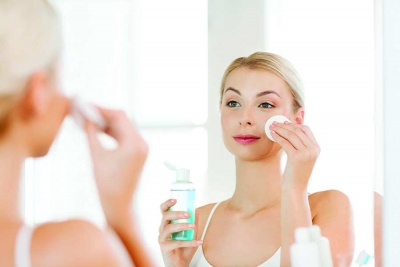
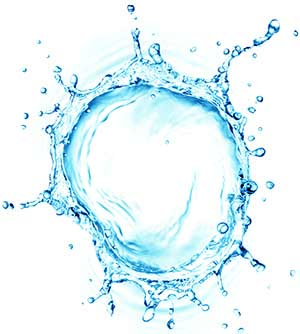
 Rachelle Dupree has over 20 years of experience in marketing, media, and communications. She earned a bachelor’s degree in communication arts and marketing and a second degree in graphic design. She studied with a Denver-based herbalist and naturopath for four years, combining her marketing knowledge with her love of natural remedies. She currently contracts as a marketing and communications director for Vivoderm Natural Skincare and various design clients.
Rachelle Dupree has over 20 years of experience in marketing, media, and communications. She earned a bachelor’s degree in communication arts and marketing and a second degree in graphic design. She studied with a Denver-based herbalist and naturopath for four years, combining her marketing knowledge with her love of natural remedies. She currently contracts as a marketing and communications director for Vivoderm Natural Skincare and various design clients.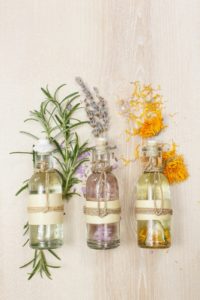
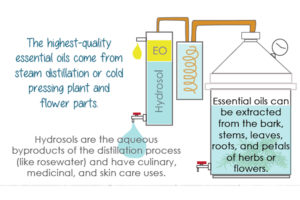
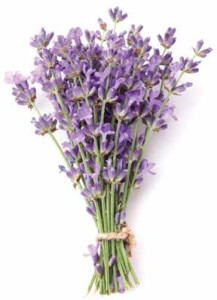
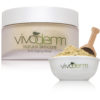
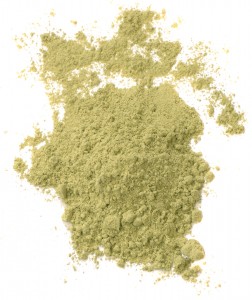
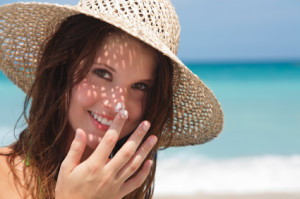
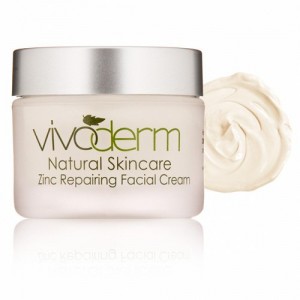
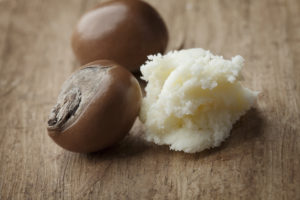
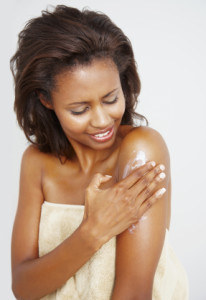

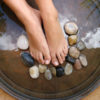
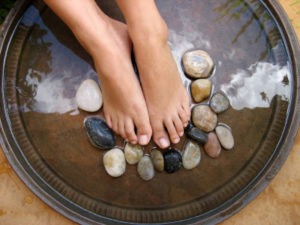
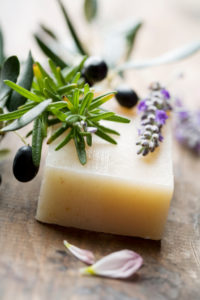 is a light and super-absorbent formula that also works well as a diabetic foot cream. Using the foot cream daily will help keep your feet baby smooth through the rest of winter. If you suffer from extremely cracked and dry feet then you can also add the
is a light and super-absorbent formula that also works well as a diabetic foot cream. Using the foot cream daily will help keep your feet baby smooth through the rest of winter. If you suffer from extremely cracked and dry feet then you can also add the 
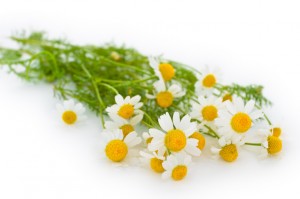
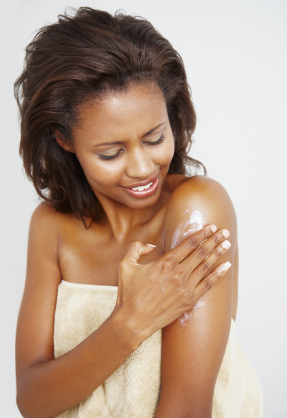 est natural ingredients it can source in all of it’s skincare products. One of those key moisturizing ingredients is Avocado oil. We use it in our Body Butter and Foot Cream as well as our Anti Wrinkle Treatment.
est natural ingredients it can source in all of it’s skincare products. One of those key moisturizing ingredients is Avocado oil. We use it in our Body Butter and Foot Cream as well as our Anti Wrinkle Treatment. keeping your skin firm and youthful. Collagen is the main structural protein in various connective tissues in our bodies and skin. As we age, the collagen tissues flatten and stretch – causing wrinkles and sagging skin.
keeping your skin firm and youthful. Collagen is the main structural protein in various connective tissues in our bodies and skin. As we age, the collagen tissues flatten and stretch – causing wrinkles and sagging skin.
 greater depth. Dr. Jean Valnet used lavender oil to treat serious burns and war injuries when he was a French army surgeon. The medicinal use of lavender, especially in essential oils, continues today with good reason.
greater depth. Dr. Jean Valnet used lavender oil to treat serious burns and war injuries when he was a French army surgeon. The medicinal use of lavender, especially in essential oils, continues today with good reason.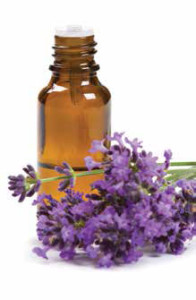
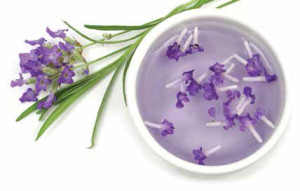 Lavender oil is useful for relieving stress. Stress that becomes counterproductive on a physiological level involves either the sympathetic or parasympathetic nervous system. Sympathetic hyperfunctioning is triggered more by physicalstress while parasympathetic hyperfunctioning is caused more by emotional stress. Lavender oil will inhibit both the sympathetic and parasympathetic nervous system functions. By selectively inhibiting either sympathetic or parasympathetic nervous excess, lavender can assist responses to unproductive stress of any kind.
Lavender oil is useful for relieving stress. Stress that becomes counterproductive on a physiological level involves either the sympathetic or parasympathetic nervous system. Sympathetic hyperfunctioning is triggered more by physicalstress while parasympathetic hyperfunctioning is caused more by emotional stress. Lavender oil will inhibit both the sympathetic and parasympathetic nervous system functions. By selectively inhibiting either sympathetic or parasympathetic nervous excess, lavender can assist responses to unproductive stress of any kind.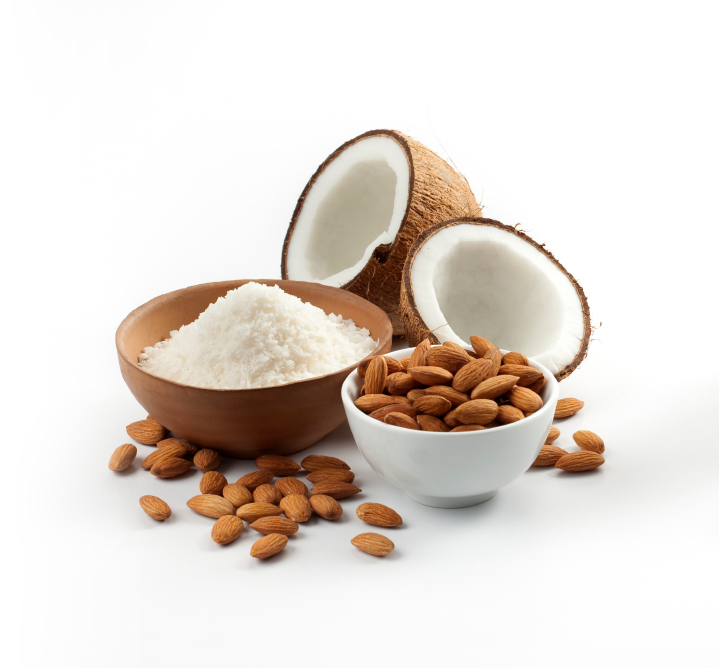
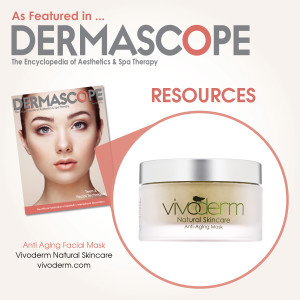 by Rhonda Allison
by Rhonda Allison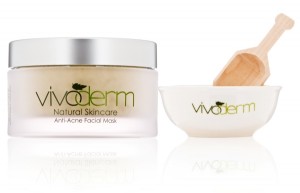
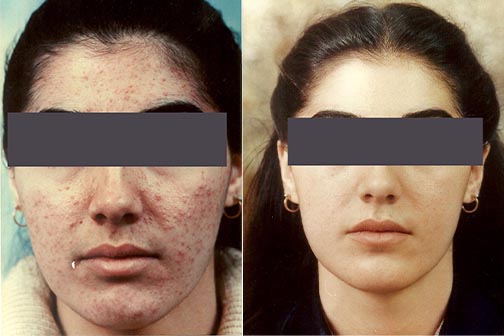 after photos for the actual results. This customizable, herbal mask is completely natural – made of pulverized herbs and lactic acid (from yogurt) – and does not contain any chemicals whatsoever. Once blended and applied, the mask enters the skin pores and unplugs them by clearing out (or pulling) all the impurities as it dries. Moreover, the antiseptic properties of many of the herbs, including Rosemary and Lavender, help in clearing out the bacteria which causes the acne in the first place. Lactic acid helps to reduce dark marks and scars. This acne treatment will remove dead skin cells slowly and produce smooth and blemish free skin with continued use.
after photos for the actual results. This customizable, herbal mask is completely natural – made of pulverized herbs and lactic acid (from yogurt) – and does not contain any chemicals whatsoever. Once blended and applied, the mask enters the skin pores and unplugs them by clearing out (or pulling) all the impurities as it dries. Moreover, the antiseptic properties of many of the herbs, including Rosemary and Lavender, help in clearing out the bacteria which causes the acne in the first place. Lactic acid helps to reduce dark marks and scars. This acne treatment will remove dead skin cells slowly and produce smooth and blemish free skin with continued use.
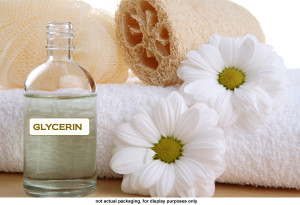 Popularly referred as glycerol, glycerin is an odorless, sweet tasting liquid which is utilized in different beauty and cosmetic products. It is highly popular because of the different advantages that it can offer for natural skin care. It is obtained from a mix of fat that is obtained from water and vegetable oil.
Popularly referred as glycerol, glycerin is an odorless, sweet tasting liquid which is utilized in different beauty and cosmetic products. It is highly popular because of the different advantages that it can offer for natural skin care. It is obtained from a mix of fat that is obtained from water and vegetable oil.
